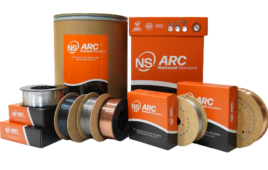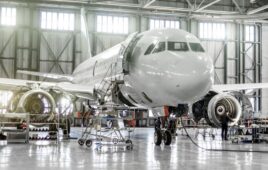Written by Jody Muelaner

Casting and fusion welding have similar material properties and processes.
Casting is used to form complete parts and fusion welding creates bonded joints between parts. Nevertheless, these processes have a great deal in common. Their material properties and the physics of the processes are quite similar.
For example, both applications involve heating metals beyond their melting point and allowing them to solidify. In both cast and welded metal, small gas bubbles or vapor formation can lead to porosity as the metal solidifies. The metals also solidify from a molten state to create the final grain structure, which is typically less refined than wrought metal that’s been cold-worked after solidification.
Additionally, in both processes, the rate of cooling largely determines the final grain structure. In castings, thinner walls generally improve material properties since rapid cooling reduces the size of crystals in the solidifying metal. This results in a fine grain structure.
Although porosity can affect the weld strength, a well-controlled welding process can virtually eliminate it. In casting, however, porosity is considerably more difficult to eliminate because the molten metal is poured or injected into a mold and turbulence develops (which entraps gas leading to porosity). But higher injection pressures can enable finer features and thinner walls, which in turn can improve grain structure.
Thin features will also have the effect of further increasing turbulence. It’s challenging to achieve very fine-grain structures with low porosity by using casting.
Interestingly, the fusion of metal in additive-manufacturing processes has even more in common with metal fusion in welding processes, using the same sources of concentrated heat.
Laser and electron-beam welding have been used for more than 50 years and arc welding has been used for more than 100 years. These processes now provide the foundation for additive manufacturing.
The physics of the metal melt pools and solidification include the way the energy source interacts with the material and the fluid flow and dynamics of the melt pool.
When energy is directed at a metallic surface, some of the energy never reaches the surface and is lost to the environment, some is reflected as it hits the surface, and some is absorbed but then radiated away.
Reflection and radiation will depend on the wavelength, material, and temperature. For example, molten metal absorbs a lot more radiant energy than solid metal. Fluid flow within the melt pool and vaporized metal flow above the pool are highly dynamic and difficult to control. The flow within the melt pool breaks up the surface oxide layers between the powder particles and the filler wires, essentially assisting the fusion into the previously deposited layers.
Any vaporized metal above the molten pool can disturb the process in unpredictable ways, altering the alloy chemistry and condensing the components that interfere with the correct function. Any vaporized metal above the melt pool may absorb laser energy, preventing it from reaching the melt pool and causing a cloud of vapor and gas to expand rapidly.
The resulting pressure can depress the melt pool, creating a keyhole that can extend deeply into the metal and lead to defects — such as porosity, spatter or balling, and entrapped voids. Sudden transitions in the melting mode can be caused by small changes in laser power, travel speed, focal spot size, and other process disturbances.
The electric-arc characteristics are strongly dependent on the direction of current flow, shield gases (such as nitrogen or argon), and feedstock properties. All of these highly complex process parameters, which affect additive-manufacturing processes, have already been modeled and understood thanks to welding processes.





Tell Us What You Think!